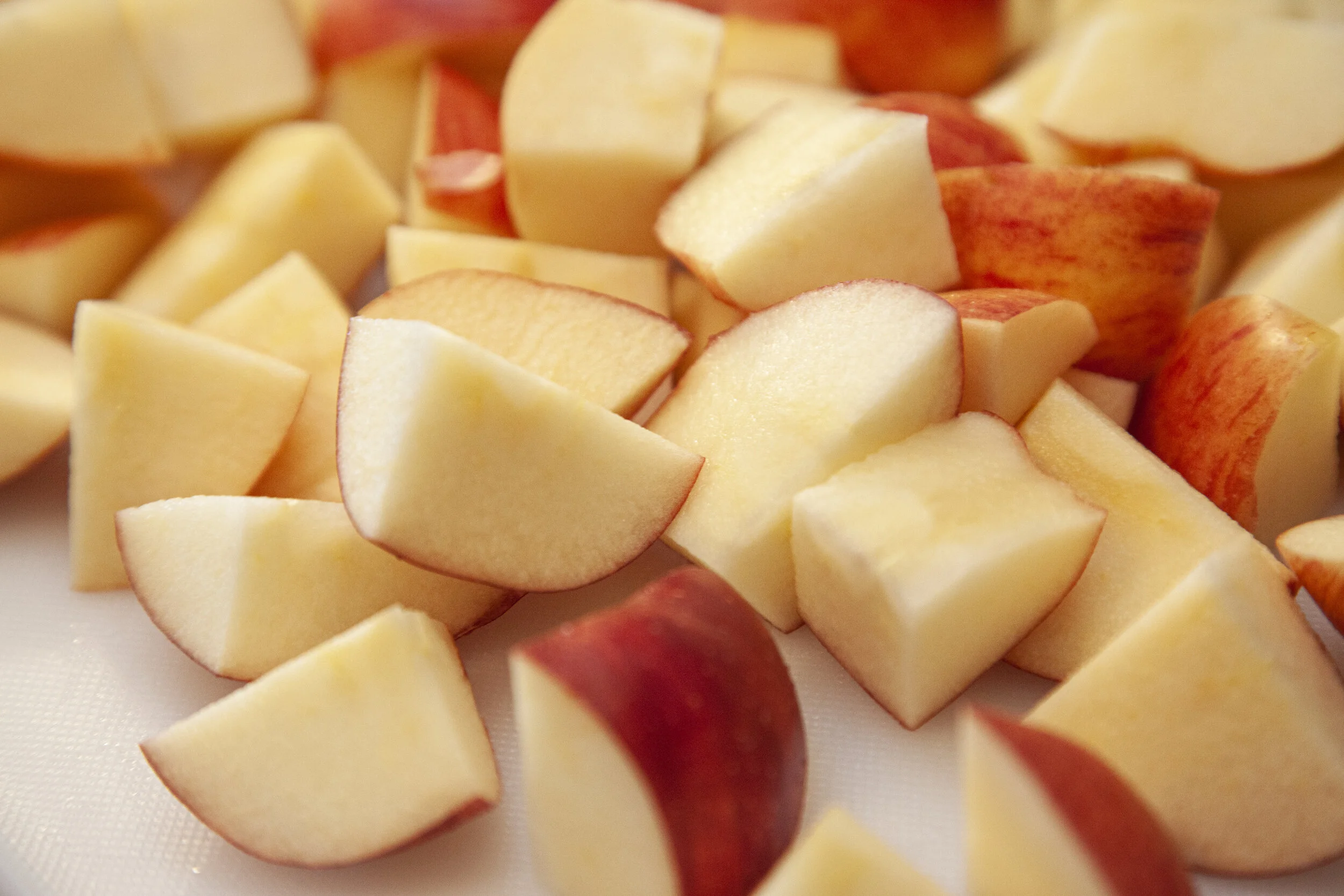Apples: Decay and Preservation
Food producers have the tricky task of keeping produce fresh and edible from the time it gets harvested to the time it is bought. Depending on what the food is, companies and farmers may use preservatives to keep the food fresh.
In this chemistry experiment, you are going to explore how well common household items preserve food. Using an apple, we are going to observe and record which of our household materials keep the apple slices from turning brown.
Learning Objectives/Opportunities
Build basic knowledge about preservatives and produce.
Science process skills: observing, predicting, recording and sharing findings
Developmental Skills: executive function and fine motor skills
Let’s Begin!
Materials
Apple, peeled and cut into 6 pieces
6 small cups
2 tbsp lemon juice
2 tbsp apple juice
2 tbsp apple cider vinegar
2 tbsp water
2 ice cubes
Directions:
Print out the Apple Preservation Lab below
Place a chunk of apple into each cup
Fill a cup with lemon juice, water, apple juice, and apple cider vinegar until the apple chunk is submerged. Put two ice cubes in one cup and in the final cup, put nothing.
Place each cup in the appropriate spot on the worksheet
Have students make a hypothesis on the lab worksheet.
After two hours, observe the colors of the apples. How much browning has occurred since you last checked? If there has not been any noticeable browning, leave apples sit out all night and observe the next day.
Using the worksheet, have students color the apple slices according to their observations of the apples.
Have students circle the apple they think is the most brown and put a star next to the one which is the least brown.
Have students report their findings.
Ask students to raise their hand if they thought the lemon juice had the brownest apple. Tally the number of votes.
Repeat for each for each item and decide which preservative worked the worst.
Ask students to raise their hand if they thought the lemon juice had the least brown apple. Tally the number of votes.
Repeat for each for each item and decide which preservative worked the best.
Breaking down the Science
When you cut apples, they get exposed to the air. The apples then begin to have a chemical reaction to the air that causes the apples to turn brown and get mushy. To prevent apples from turning brown, we can use preservatives to protect the apples from the air and keep them fresh.
You should have observed that lemon juice did the best at keeping your apples from turning brown, but all methods (except for nothing) should have prevented some of the reaction because they all provide some buffer against the oxygen in the air.
STEMSpark Stumper
Companies and farmers can’t just use anything as a preservative. Some chemicals are not safe for humans to eat and some change the flavor of the food. In this activity, we only considered what works best as a preservative, but think about how these items might change the taste of the apples.
Can you think of a way to test which item keeps the apples the freshest, but also changes the taste the least?


